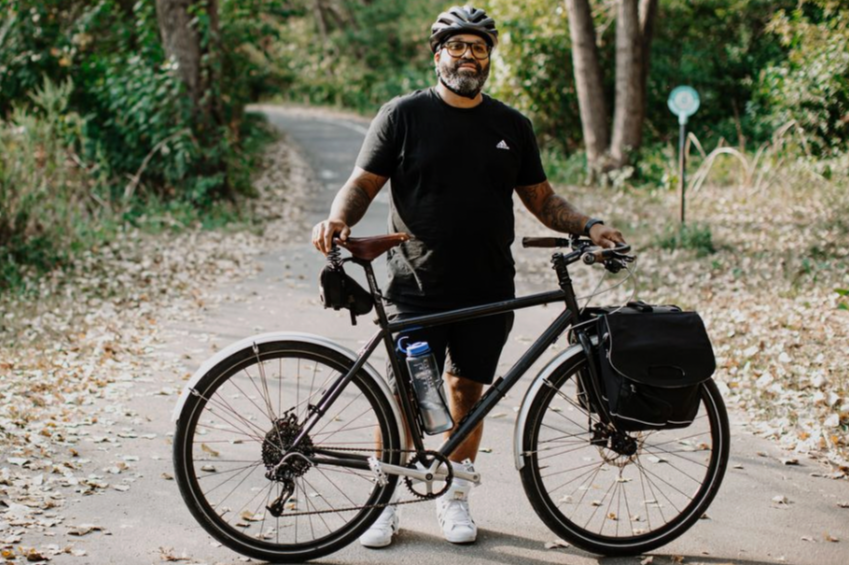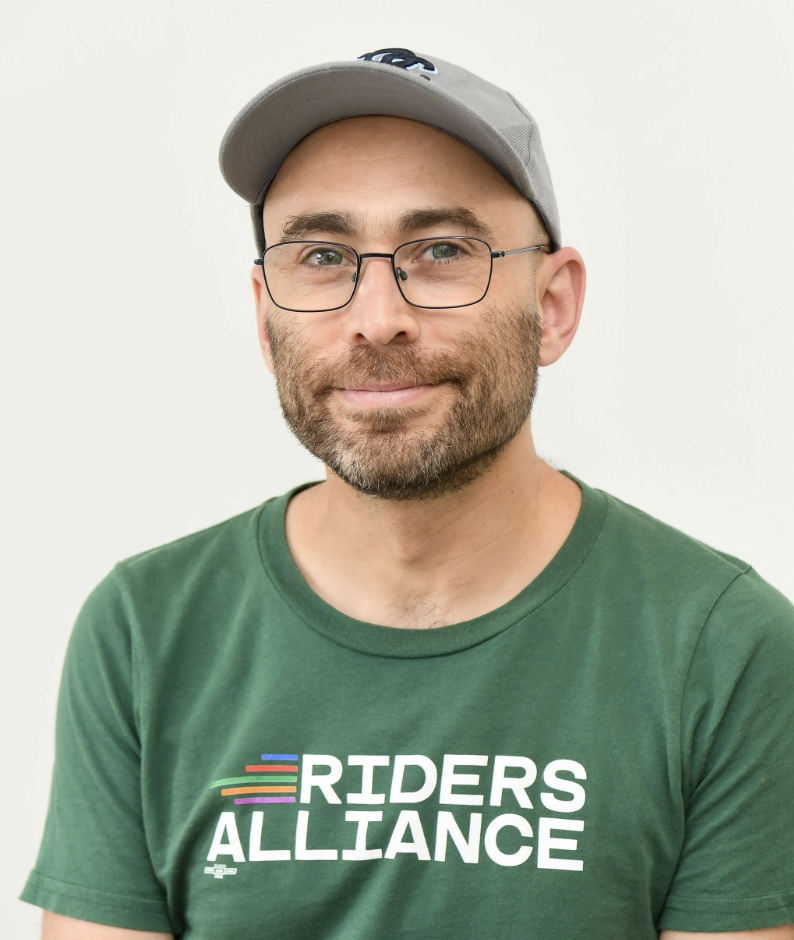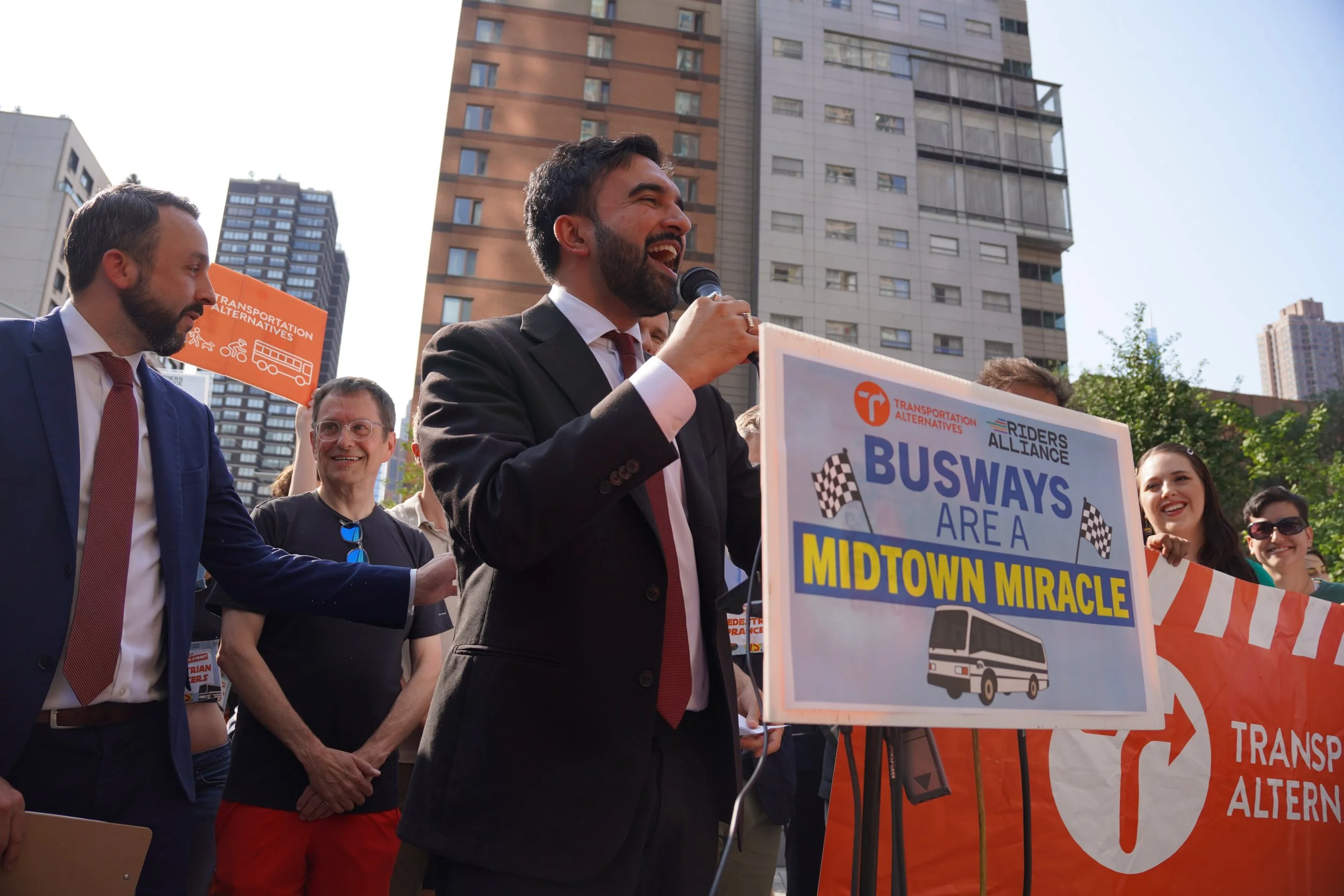
The Road to Affordability
A Streets and Transportation Agenda for the Next Mayor of NYC
New York City is the city that never sleeps. Inside the five boroughs, it can seem like everything is moving at the speed of light — except local government. Seemingly-simple changes can involve years-long timelines and half a dozen agencies, or they may be out of reach altogether.
But there’s one exception: our streets.
When Mayor Zohran Mamdani takes office in January, he’ll suddenly control over 6,300 miles of streets and nearly 50,000 intersections. He’ll have authority over our city’s largest public space, and a mandate to transform it.
Upon entering City Hall, Mayor-elect Mamdani will have enormous power to shape the lives of everyday New Yorkers — how we get to work, to school, to the doctor, or just around our neighborhoods. Our commute can be the difference between a great day and a disastrous one, and the mayor has a role to play in ensuring the former.
Mayor-elect Mamdani will also come into office at a critical moment for New York City and our country. We are in the midst of an affordability crisis — and the incoming mayor has an opportunity to help New Yorkers get to work and to pick up their kids without breaking the bank or losing hours stuck in transit.
The most affordable ways to get around the city are walking, biking, and taking the bus or subway. It’s far more expensive to get around by car — New Yorkers' average spending on cars is nearly six times their spending on public transportation. But too many New Yorkers feel like the more affordable options are unavailable to them. When our transportation is quick and inexpensive, that means more money in our pocket and more time in our day. With extra money, maybe it’s easier to stay and raise a family in the city we love. With extra time, maybe we have an hour more to spend with our children, our aging parents, or our friends and neighbors. Our lives are better if our buses are fast and reliable, our sidewalks are clear and wide, and our bike lanes are protected and connected.
At Transportation Alternatives, we’re fighting for a city we can afford to get around — and this incoming administration has an incredible opportunity to reshape both the streets of New York City and how New Yorkers use them. Mayor-elect Mamdani has a chance to put his vision for a more affordable and livable city into practice on our streets.
This agenda is a blueprint to achieve the better version of our city that all New Yorkers deserve. It contains policy proposals that are both ambitious and common-sense — tools for the next mayor’s transportation toolkit.

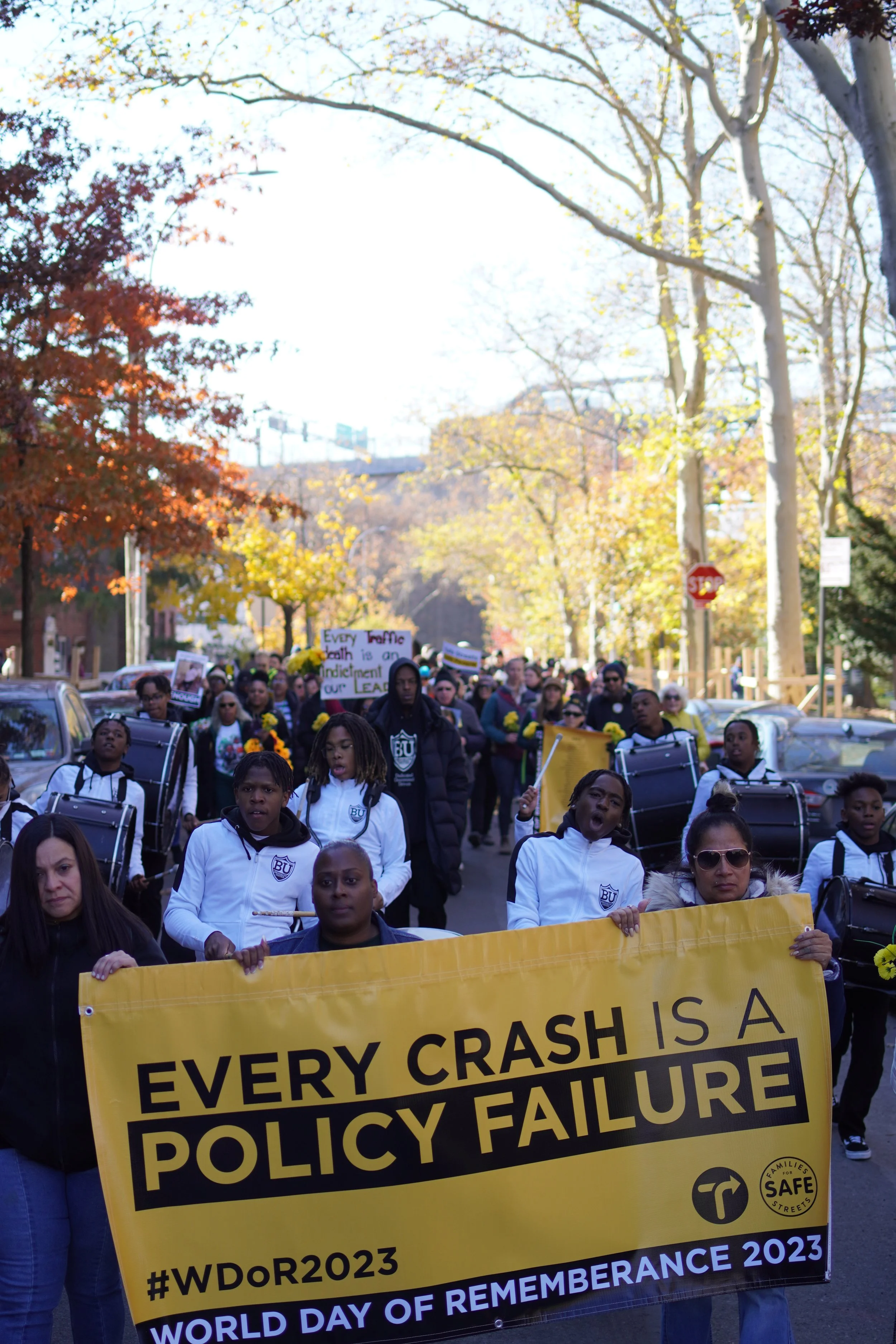
Saving Lives Must Be
Our First Priority
Every year, 250 New Yorkers are killed in traffic crashes.
An empty chair at the dinner table, an empty desk in a classroom, or a ghost bike on a street corner — every person killed is an unstitched gap in a family, in a community, and in our city.
It doesn’t have to be this way. With different design, infrastructure, and policy choices, every street can be a safe one. Safe streets mean that children can go out to play, older adults can age in place, and everyone can ride a bike. And if every New York City street and sidewalk were safe, New Yorkers would feel more comfortable choosing the least expensive ways to get around.
The Mamdani administration must recommit to reaching Vision Zero, through safe street redesigns and ensuring safer vehicles on the road. By following the steps below, City Hall can ensure that every New Yorker makes it home safe, with more money in their pocket.
In the first 100 days:
Implement Sammy’s Law by committing to lowering speed limits to 20 mph on all eligible roads across the city, and beginning to change signage within the first 100 days.
Reboot Vision Zero with a focus on transforming streets for safety, elevating the role of traffic engineers, and expanding automated enforcement.
Accelerate redesigns of the most dangerous corridors in every borough.
Revisit all Vision Zero efforts so far, asking agencies for data-driven, demonstrable markers of effectiveness.
Begin a Vision Zero demonstration area by choosing one neighborhood to fully implement Vision Zero interventions and demonstrate their enduring value.
Stop Super Speeders. Work with the state legislature to require the installation of speed limiter devices on the vehicles of recidivist super speeders who receive a large number of school zone speed camera tickets. Speeding is a major factor in about 80% of crashes that kill people in cars in New York City.
Implement universal daylighting. Make it safer to cross the street with universal daylighting of intersections, using hardened physical infrastructure, such as curb extensions, benches, planters, Citi Bike stations, and bike parking, to increase visibility and slow turning speeds at every intersection.
In the first term:
Re-time traffic signals to the local speed limit or lower as a citywide standard in order to prevent speeding, tickets, and crashes.
Expand automated enforcement by advancing new safety technology in select locations around New York City, including cameras for failure to yield, blocking the box, school bus passing, and bike lane enforcement.
Close all slip lanes. Slip lanes — extra lanes that allow fast turns but increase risk for pedestrians — are dangerous and unnecessary. Every slip lane in the five boroughs should be closed off and used as pedestrian space.
Launch a Low-Traffic Neighborhood program, modeled on the success of a similar program in London. Demarcate lower-traffic neighborhoods and redesign their streets to encourage healthy and sustainable modes of transportation, to “self-enforce” slower speeds, and to divert cut-through traffic to arterial streets. Low-traffic neighborhoods maintain access while reducing traffic on residential streets and lowering traffic fatalities.
Lobby Albany to reform vehicle registration fees. Vehicle registration fees in New York City — currently flat — should be converted to a weight-based system, reflecting the greater impact of heavier cars on road surfaces, crash fatality rates, and air pollution. One option would raise an estimated $36 million annually, according to a 2018 analysis by the New York City Independent Budget Office, and a more proportional system could raise even more.
Cap the percentage of newly-registered TLC vehicles that can be SUVs, including electric vehicles, reflecting the fact that most TLC trips have a single passenger.
Create a website for victims of a serious motor vehicle collision to access information about the collision, including updates on the status of the investigation of the collision, whether or not any summonses have been issued, and whether any witnesses have been identified.
Mimic San Francisco’s Vision Zero fatality reporting, which directly connects crashes to street design and suggests post-crash design recommendations. Require DOT to investigate serious injury vehicle collisions with more detailed reporting, like in Intro 263.
Ban parking in front of pedestrian ramps at T-intersections by passing the proposed but long-stalled rule. The status quo prevents those with mobility difficulties or devices from accessing the crosswalk, and blocks sightlines between drivers and pedestrians.
Instruct the Department of Sanitation to remove snow from sidewalks and bus stops citywide. New Yorkers — especially those who use wheelchairs, walkers, canes, or push strollers — are often trapped because the City relies on property owners to care for sidewalks, or because jurisdictional gaps leave too many public spaces un-cleared.
Work with the New York State Power Authority to expand the Smart Street Lighting NY program in New York City, and empower the authority to coordinate with New York City DOT to target lighting improvements to pedestrian-crash-prone areas, and to couple new lighting with leading pedestrian intervals (LPIs) and raised crosswalk installations.
Patricia Morant, Member of Families for Safe Streets
“Losing my only son, Aundrei, after he was hit and killed was the worst thing that has ever happened to me. Not a day goes by that I stop missing him. We need full implementation of these proven safety measures so New York City can finally have truly safe streets. No one should be afraid to cross the street, and no one should bury their child.”
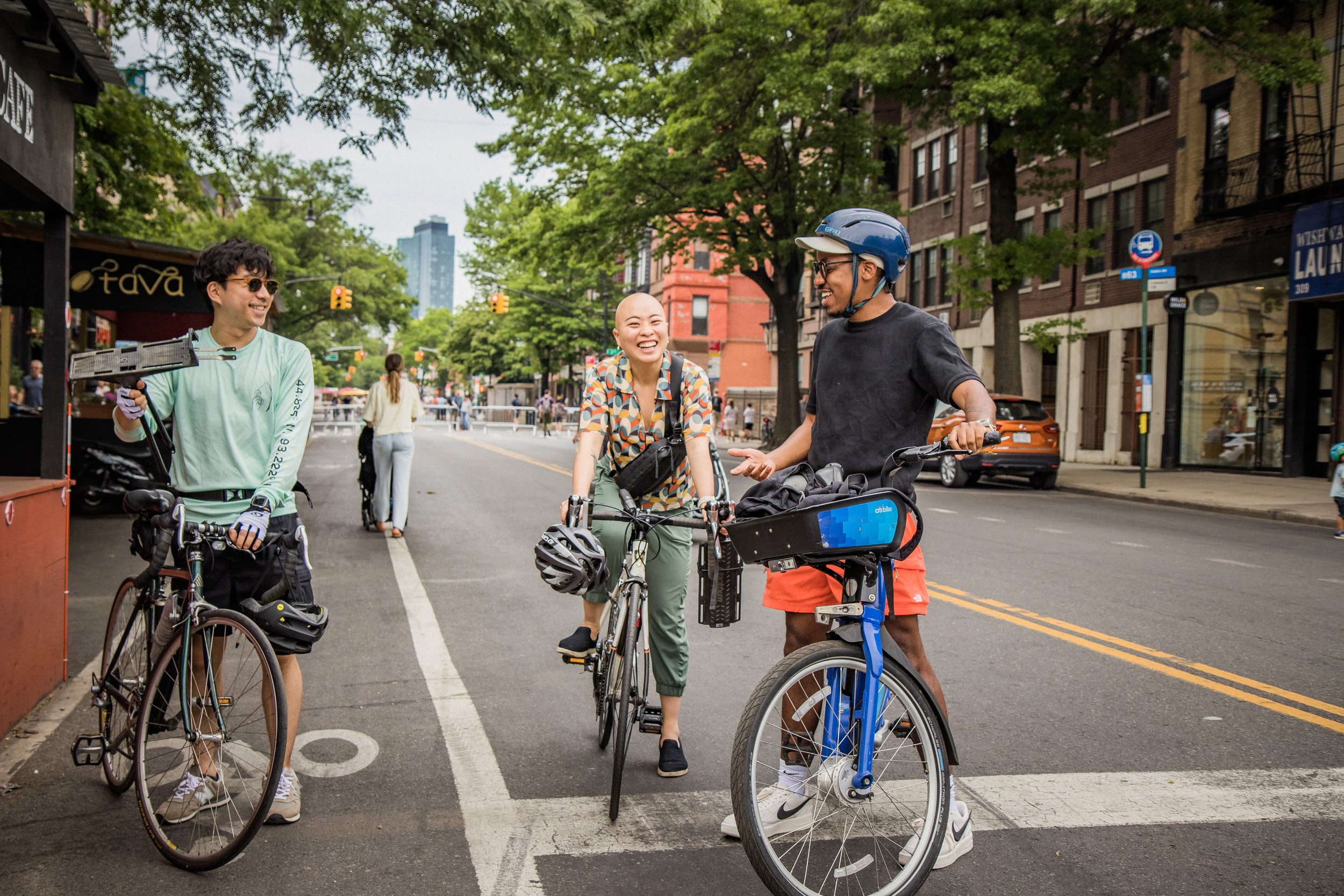
Biking Should be a Safe and
Accessible Option for Everyone
The best way to get from Ridgewood to Jackson Heights, or Bay Ridge to Bath Beach, or Parkchester to Arthur Avenue, is on two wheels.
But too often, there’s no safe place to ride. Every day, New Yorkers take trips where there is no easy train, bus, or ferry connection, and it feels like the only safe way to travel is by car. At the same time, owning a car means paying for gas, maintenance, and insurance — vehicle expenses average nearly $9,000 per year — all while losing hours in traffic and circling for parking.
There are countless New Yorkers who share this same predicament. Biking would be convenient, save them time and money, and make their lives easier, if only it felt safe and accessible with a high-quality and expansive protected bike network.
Biking can be a fun hobby; it can be a form of exercise; it can be a way to cut down on pollution and clean the air. But it’s also about affordability — when it’s safe to bike, suddenly there’s an almost-free transportation option.
These ideas aim higher than just safety. New York City shouldn’t just be a safe place to bike, it should be a fantastic place to bike — a world-class bike city where anyone who wants to, feels comfortable hopping on a bike to get around. By following the steps below, the Mamdani Administration can turn New York City into a true haven for everyone on two wheels.
In the first 100 days:
Commit to building a citywide bike network that reaches every New Yorker. Instruct DOT to draw up a plan for a safe biking network — of greenways, protected bike lanes, and bike boulevards — that reaches within a quarter-mile (a one-minute bike ride) of every New York City residence.
Stop treating biking infractions as a criminal offense and end the differential 15 mph speed limit for e-bikes alone. Embrace a 20 mph speed limit for everything on the road.
Give New Yorkers a safe place to store their bikes by awarding the contract for New York City’s first citywide secure bike parking program and then fast-tracking widespread implementation, in line with the highly successful programs in major cities like London, Paris, and Minneapolis.
Develop a plan to reach one million daily riders by 2030. Instruct DOT to better measure bike ridership citywide, expanding data collection and making it publicly available.
In the first term:
Establish a standard and NACTO-recommended bike lane design, which uses a standard minimum width, sturdy bollards or cement protection, and green paint. The standard should be implemented on all new bike lanes going forward, and retroactively on all existing bike lanes. Paint-only bike lanes should be rapidly upgraded to protected bike lanes, integrating new daylighting designs to encourage ridership among the two-thirds of people who are “interested but concerned” about their safety while biking.
Commit to full citywide access to the Citi Bike bike share program by 2030 by allocating city funding to the program for the first time. Citi Bike is the only bikeshare program in the world to function without public funding. Ask Citi Bike to draw up a three-year plan to expand citywide; this report should include steps to seamlessly integrate Citi Bike with the wider protected bike network, price caps for e-bikes, discounted memberships for students and seniors, no arbitrary speed limits, expanding Citi Bike station electrification, and a plan to install full-block Citi Bike stations at the busiest subway and bus stations citywide.
Prioritize the construction of protected bike lanes based on data from delivery workers’ trip routes, cyclist injury rates, and “biking on the sidewalk” summonses. The installation of protected bike lanes reduces cycling on sidewalks by as much as 94%.
Install NACTO-approved protected bike intersections across the bike network, starting at the most dangerous intersections on protected bike routes in each borough.
Standardize bike-specific traffic signals, which increase safety and cyclist compliance with traffic laws, along the highest ridership corridors. Implement “green wave” light timing by changing 25 mph timed streets to 15 mph on all major bike corridor streets to support safe and comfortable biking and to reduce red-light-running.
Coordinate agencies toward a goal of 24/7 separated bike access on all bridges. Build seamless connections between the bridge bike paths and the protected bike network.
End the sale of the fastest and heaviest e-bikes. Work with the City Council to pass Intro 1380 and phase out Class 3 e-bikes, capable of exceeding 20 miles per hour, to reduce risk in the bike lanes.
Support local biking by expanding support for bike education, bike buses (where children and parents ride together to school), and community bike rides. According to a 2014 law, schools across the state are required by law to teach students about traffic safety — which includes bicycling — but the law doesn’t specify the length or scale of such a program, and, as such, is frequently ignored. Just six schools citywide per semester offer classes.
Establish an empowered interagency task force to coordinate and build all remaining greenway connectors, linking existing greenways and waterfront paths into an interborough off-street network that connects to parks and is integrated with the on-street protected bike lane network. Fully fund and staff greenway maintenance.
Work with the State DOT to advance the Interborough Express (IBX) and include walking, biking, and public transit access to the stations. Build a greenway that follows the route of the IBX, secure bike parking at every station, and safe crossings.
Direct the Department of City Planning to expand the Floor Area Bonus program — which currently allows for more density in new construction if public amenities like grocery stores, daycares, or pedestrian plazas are included — if a street-level, publicly accessible, secure bike parking facility is included.
Allow developers to swap each mandated car parking space in new development for five secure bike parking spaces. This would lower construction costs, give developers flexibility to choose based on market demand, increase secure bike parking spaces, and reduce car ownership citywide.
Make it safe and easy to get around by e-bike. Expand the network of e-bike public charging stations, expand the battery-swapping pilot and the e-bike trade-in program for delivery workers to replace unsafe devices, and provide guidance to residential buildings for the safe storage of legal e-bikes. Create and fund a pilot program with public library systems to offer e-bikes and e-cargo bikes for loan. Get e-bikes off the sidewalk by building delivery worker bike corrals outside of high-volume pick-up locations.
Convert on-street curbside parking nearest to unprotected bike lanes into truck loading zones to prevent illegal parking from blocking these lanes.
Install cycling footrests at traffic lights for cyclists to stop more comfortably, encouraging cyclists young and old, and reducing red-light running.
Ask the Metropolitan Transportation Authority to install bike racks on all bus routes. New York City is the only major U.S. city without bike racks on every bus.
Edmundo Martinez, Community Advocate & Liaison, NYC Greenways Coalition
“Greenways connect people, not just places. When we make space for for other forms of transportation, like cycling, we make space for community. These safe, protected paths for walking and biking open up New York City, and are particularly important for closing network gaps and bringing tangible benefits to outer-borough and historically undeserved neighborhoods. Any elected leader who’s serious about safe streets, less congestion, cleaner air, waterfront access for all, and closing park deserts must radically expand the city’s greenway network.”
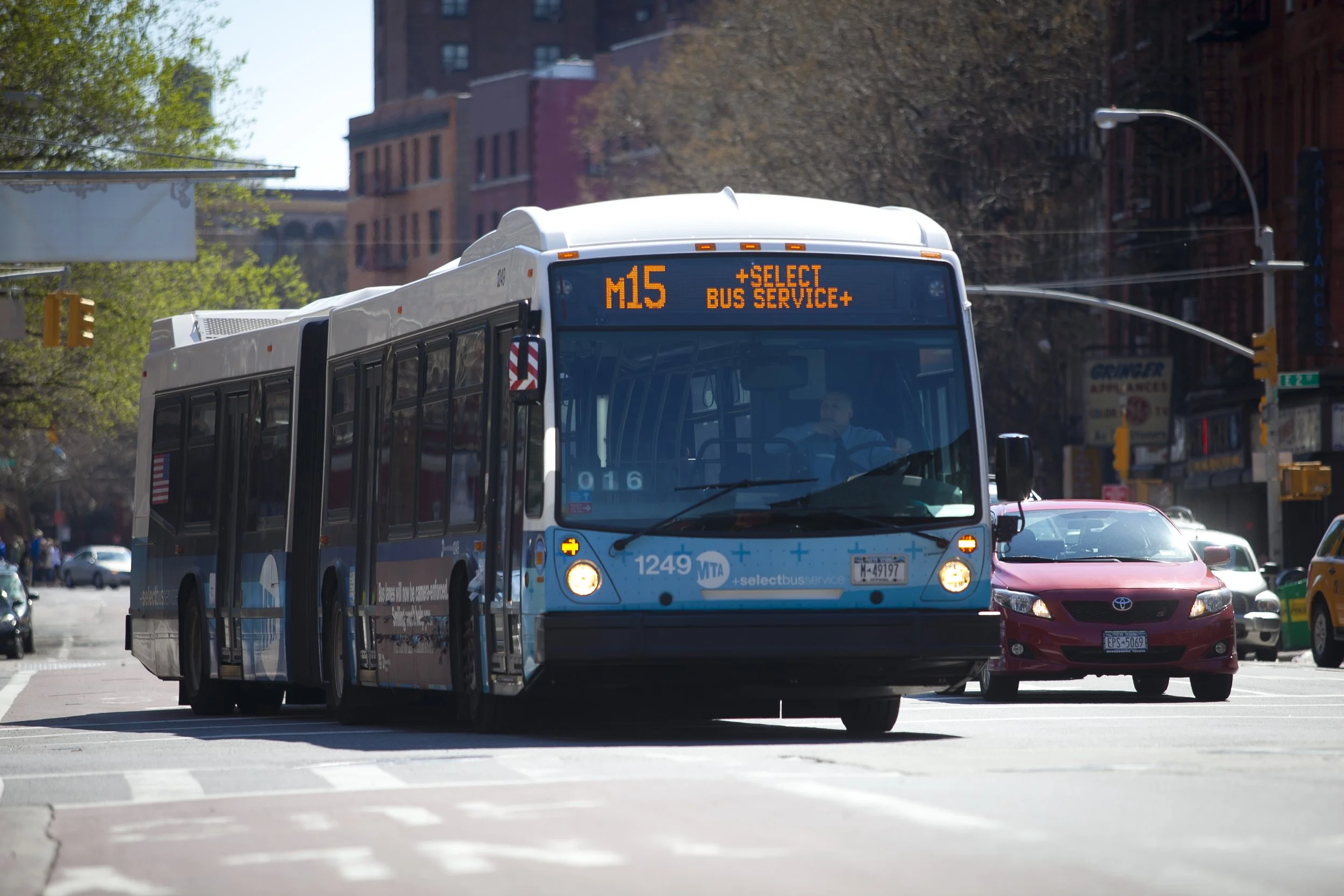
The Bus Should Be Fast
Buses could be the most efficient way to move the largest number of people on our streets, but New York City’s buses are stuck in traffic.
Today, over a million New Yorkers will ride the slowest buses in the nation. The average bus speed in New York City is only eight miles per hour — an international embarrassment for the city and a daily hassle for everyone who relies on the bus.
Not only do New Yorkers ride slow and unreliable buses, but we also spend millions of hours waiting without a seat, shade, or protection from the elements. On the hottest, coldest, rainiest, and windiest days of the year, hundreds of thousands of New Yorkers stand out on the curb, not sure of when or whether the bus will come.
It doesn’t have to be this way. The Mamdani administration should establish a goal to speed up total bus speeds by 20% citywide and ensure New Yorkers can wait with dignity. As a candidate, he committed to making buses fast and free. As mayor, there is so much he can do to make buses frequent, reliable, and pleasant. By quickly implementing bus interventions across the five boroughs, beginning to build out Bus Rapid Transit, and building high-quality bus stops citywide, the bus can become the fastest and most enjoyable way to move on New York City’s streets.
In the first 100 days:
Develop a plan for marquee bus rapid transit on at least five key routes. High-quality bus rapid transit is possible across the five boroughs and can dramatically speed up buses. BRT is distinguished by center-running bus lanes, busways, off-board fare collection, level boarding, and a subway-like experience on the streets.
Establish a standard design for all bus lanes — including red-painted lanes, bus bulbs, camera enforcement, and 24/7 operation. All existing bus lanes and busways should be brought in line with this standard, and all new bus projects should be required to meet this standard.
Establish a target to speed up bus speeds by at least 20% citywide. Restore ambition and focus to increase bus speeds citywide. The City should take action to speed up buses in targeted sluggish areas, and the mayor should use the appointment power of his MTA Board seats to advocate for better bus dispatching, ambitious bus network redesigns, all-door boarding, buses with doors on both sides, and other service improvements.
In the first term:
Fund buses as a free essential service for all New Yorkers. Public buses in the five boroughs should be free to ride. This is a matter of affordability, and also of speed — unlike on the subway, fare collection delays bus trips. Assemblymember Mamdani’s and Senator Gianaris’s year-long free bus pilot program provides the blueprint, with promising results of higher ridership and increased safety for bus operators.
Make catching the bus a better experience. Today, only 20% of bus stops have a bus shelter to protect riders from the weather, but waiting for the bus doesn’t have to be miserable. The new administration should create a five-year Citywide Bus Stop Plan to ensure every bus stop has a shelter, bench, and real-time arrival information.
Within six months: At the busiest bus stop in each borough, design and pilot one world-class bus waiting area with benches, trees, bike parking, and bike share access.
Within one year: Build shelters and benches at the 100 hottest bus stops.
Within three years: Commit to major redesigns (BRT-like amenities, shelters, real-time arrival information, level-boarding, benches, trees, etc) for the 156 bus stops that service more than 45 buses per hour during the morning peak.
Install more stationary bus lane cameras and protect all bus lanes. While bus-mounted automated camera enforcement can only be installed by the MTA, the City has control over stationary bus lane cameras installed on the street.
Build a car-free busway on every high-priority bus route, as measured by factors including highest ridership and slowest speeds. The 14th Street Busway is a success story that should be replicated across the city. Restrict all vehicles from making left turns off of a busway.
Call on the Port Authority to convert a second lane of the Lincoln Tunnel into a bus-only lane, and to make both the current Exclusive Bus Lane (XBL) and the new lane operate 24/7, so bus riders don’t have to sit in bumper-to-bumper traffic waiting to cross the Hudson River. Push the MTA to explore more service that crosses boroughs and uses bridges and tunnels, such as a bus route through the Brooklyn Battery Tunnel from Red Hook.
Danny Pearlstein, Policy & Communications Director at Riders Alliance
"A city we can afford needs streets we can afford. Fast, reliable bus service in every neighborhood, connected cycling routes, and sidewalks and intersections where everybody feels comfortable and safe will save people money and time.”

Streets Can Be Our
Greatest Public Spaces
New York City’s 6,300 miles of streets are an enormous public resource — but the vast majority of this space is reserved solely for the movement and storage of private vehicles.
Our streets can be so much more. Streets transformed into world-class public spaces can become points of pride for New Yorkers, community hotspots to come together as neighbors and friends, and must-see destinations for visitors from around the world.
Giving New Yorkers access to public space close to home does the impossible: it makes your apartment bigger overnight. With extended living space, people can socialize and exercise for free just steps from their front door. All across New York City, families crowded into cramped apartments struggle to access green space. We may not be able to build a park on every block, but we can do the next best thing and create streets where kids can play safely.In the last century, New York’s public space was taken over by cars. It was illegal to park a car outside overnight until the 1950s — and now almost all of our street space is dedicated solely to moving and parking cars. It’s time to put our streets to a higher use and transform New York City’s largest public space into a true public amenity, so that families across the five boroughs feel like they have the room to grow here.
In the first 100 days:
Announce a plan to expand Summer Streets to every Sunday year-round, with an all-day program that includes a continuous route that connects at least four boroughs.
Announce a plan for dramatically expanding pedestrian spaces, including building on existing community-led plans for FiDi, Broadway, and SoHo. Plazas, Open Streets, microparks, and more can turn public space into a public good across the five boroughs.
In the first term:
Create “School Streets” by closing streets to car traffic adjacent to every New York City school, instantly creating new and safe public space for active play and outdoor learning, making drop-off and pick-up safer, and encouraging parents and students to walk, bike, or take public transit to school. Dozens of School Streets are already successful across the city, and with a serious expansion, every student can have a safe, car-free place to play.
Fix the outdoor dining program by working with the City Council to ensure the program is year-round, permits enclosed structures, and is less onerous for small businesses. Subsequently, expand the Street Seats program.
Protect and expand Open Streets by expanding support for maintenance and programming, turning temporary installations into permanent car-free spaces, and fully funding the program.
Build playgrounds on low-traffic streets. Solve the playground desert problem by transforming through-streets into cul-de-sacs and creating midblock playgrounds.
Upgrade the curb space closest to every subway station with amenities for the community. Repurpose the parking spaces on the blocks closest to each station with transit amenities like wider sidewalks, larger bus shelters, secure bike parking, bike share access, benches, microforests, and public restrooms.
Work with the MTA to find street space below or above subway stations that can be pedestrianized to ease the siting of new elevators. It can be prohibitively expensive, difficult, or impossible to build elevators on existing, limited sidewalk space. Expanding pedestrian space has the potential to speed up elevator construction.
Recapture land lost to Robert Moses-era highway projects and ensure that this reclaimed land is given back to people as open space and public transportation infrastructure. Tear down or repurpose aging highways, or activate the areas underneath elevated structures, instead of repairing or replacing them with new infrastructure designed for cars.
Coordinate a multi-agency, City Hall-led citywide curb management strategy team that tracks city curb use, reports data on revenue and proper and improper curb use, and proposes data-driven policies for curb management that are applied holistically, instead of piecemeal and reactively, on similar streets citywide.
Set up decibel meters at 100 additional locations citywide and track noise pollution in the Mayor’s Management Report. Establish goals for noise pollution reduction across the city.
Instruct the Department of Health and Mental Hygiene, the Department of Transportation, and the Parks Department to designate “Tree Cover Priority Districts” where asthma rates, air pollution, and summer surface-level temperatures are highest, and fund a tree planting campaign that fills all remaining tree pits and replaces parking spots with trees in these areas.
Expand green space on city streets. Require developers to install rain gardens or bioswales in new development projects of a certain size, catching up to most cities that have such requirements, including Seattle, San Francisco, and Washington, D.C. Where feasible, require barriers with vegetation between protected bike lanes and vehicle lanes, like Intro 1233 proposes.
Require DOT to widen sidewalks to allow clear passage when re-designing streets. DOT should widen sidewalks to the minimum required width when re-designing streets, following its own standard. DOT should also develop a plan to widen all existing sidewalks that fail to meet this minimum, starting in the most crowded or dangerous pedestrian locations.
Move Citi Bike stations off the sidewalk to keep bike riders on the road, give pedestrians more space, and make it easier to dock and undock bikes without leaving the roadway. Prioritize the relocation of Citi Bike stations that are currently sited on narrow sidewalks against DOT’s own clearance guidance.
Build raised midblock crosswalks in front of every public destination with a midblock entrance, such as schools, parks, playgrounds, libraries, hospitals, government buildings, public housing, and post offices.
Keep sidewalks free of cars by protecting frequently blocked sidewalks with bollards, and by towing cars parked on the sidewalk with zero tolerance. Sidewalks near precinct offices, firehouses, and other City buildings should not be full of illegal parking.
Kathy Park Price, Director of Advocacy & Policy at New Yorkers for Parks
“Reclaiming even a small fraction of our 6,300 miles of streets for play, greenery, climate infrastructure and gathering would expand access to open space for many residents across the city.”
Saskia Haegens of the Vanderbilt Avenue Open Street
“The Open Streets program empowers communities to reimagine how we use our streets. It has allowed us to transform our streetscape and create new public space for children to play, for outdoor dining, for neighbors to connect. It has made our streets safer and supported our local businesses. There is a real and exciting opportunity for the next administration to fully fund and scale up the program, and to fast-track street redesigns. The Open Streets program should be the blueprint for public space transformation in neighborhoods across the city.”

We Must Build Agencies and Budgets
That Work for Our Streets
New York City’s government should make our lives better — but it can’t fulfill its mandate without the staffing and budget that make the work possible.
When the City’s Department of Transportation has the resources it needs, every New Yorker will feel the difference. With safer, more efficient, and more accessible streets, more New Yorkers will be able to choose the cheapest transportation options: walking, biking, and riding public transit. Owning a car is expensive, and the freedom to go car-free means more money in your pocket.
Without ample resources for city government, enforcement can fall by the wayside. Sidewalks, curb cuts, bike lanes, bus lanes, and more only work when they’re not full of illegally parked cars. The ideas below expand on how parking and illegal truck enforcement are critical for both a functioning city and functioning streets.
All of the ideas in this report are good ones, but they’re not possible without a high-integrity City government that has the resources to make it happen. If the Mamdani administration follows through on the changes outlined below, it’ll pay dividends in every corner of New York City. quality bus stops citywide, the bus can become the fastest and most enjoyable way to move on New York City’s streets.
In the first 100 days:
Finish the Job: Un-pause all existing bus projects, bike lane projects, and street safety projects that have already been presented to community boards but then stalled, or were implemented and then removed.
This includes, but is not limited to: McGuinness Boulevard, Ashland Place, Bedford Avenue, and Third Avenue in Brooklyn; Fordham Road and Tremont Road in the Bronx; and Fifth Avenue in Manhattan.
Go bold with the NYC Streets Plan 2.0. The updated Streets Plan is due in 2026, and it’s an opportunity for the incoming administration to lay out a clear and comprehensive vision for the streets of New York City that moves from the incremental addition of bike, bus, and pedestrian space to complete transit networks of protected lanes and greenways that link all boroughs. Include commitments that dramatically increase low-traffic neighborhoods, build new greenways, aggressively reduce vehicle trips in high-density areas, and convert curb parking into better public space use.
Commit all necessary funding in the mayor’s executive budget to fully implement the Streets Master Plan, as required by law; end the safe streets hiring freeze; and increase DOT staff to meet the measure of this legislation.
Work with the City Council to regulate delivery app companies — just as the City regulated app-based for-hire vehicle companies — requiring safe business practices that protect New Yorkers in exchange for access to our streets. Professionalize delivery work, require data transparency, hold all apps accountable with a holistic regulatory system, and ensure companies cannot demand unsafe routes or impossible completion times for workers.
In the first term:
Efficiently manage the curb to fund street projects. Use demand-based metering to meter up to 25% of New York City’s three million free curbside parking spaces. Similar efforts in other cities have been shown to decrease parking search times, citations, double parking, congestion, vehicle miles traveled, and pollution, and to increase bus speeds and activity at local businesses. In New York City, this program could raise upwards of $4 billion annually for the traffic improvement fund, which can be used to “ameliorate traffic conditions which adversely affect the welfare of the city.”
Expand the capacity of DOT to do larger and more ambitious projects in-house. Today, projects like expanding sidewalk space or relocating drainage require multiple agencies’ coordination. DOT should be able to handle street design changes quickly and in-house with higher-quality materials and treatments.
Expand the Office of the Public Realm’s purview and staffing, incorporating the Street Activities Permitting Office (SAPO), increasing the budget to speed up interagency public space projects, and reforming the SAPO permitting process to more quickly approve public improvements like Open Streets.
Reform the Department of Design and Construction. Expand the authority and flexibility of the Department of Design and Construction to lower costs and speed up larger capital projects on the streets.
Establish a People Level of Service policy that prioritizes street space based on moving people, not cars, and that supports more efficient ways to get around. Charge DOT with using this measure for street redesigns — counting people walking, riding the bus, in cars, and on bikes, and allocating street space accordingly.
Launch a municipal “Micromobility Rebate,” mirroring successful programs in Europe, offering 25% back on the purchase of a bike, scooter, e-bike, e-cargo-bike, or e-scooter. A similar program in Sweden doubled the number of e-bikes within a year.
Require all City agencies to provide greater transit, e-bike rental, and bike share incentives to reduce drive-to-work rates. Today, nearly 300,000 City employees — many of whom work in the most congested areas of the city — drive to work, but the exact numbers are unknown. The City should track drive-to-work rates in each agency, and lead by example by reducing these numbers.
Expand ferry service with new routes across New York City, including direct connections between the outer boroughs, and new stops in Canarsie, South Brooklyn, Inwood, and City Island.
Increase the quality of fast-build materials for street improvements, and explore the formation of a procurement consortium with nearby jurisdictions to keep the cost down on widely used materials, such as jersey barriers and other hardened bike lane materials, red/green paint for bus/bike lanes, granite blocks for daylighting, and benches.
Reform parking placards.
Transition away from the by-agency system of permits to a uniform citywide placard with a barcode for digital verification.
Conduct annual audits of actively-issued placards — nearly 100,000 placards were issued in 2022 alone.
Require DOT to use license plate readers for all parking violations, find ghost plates more easily, and eliminate placard abuse.
Require NYPD to provide specific information, such as a badge number or photo confirmation, before closing out a 311 service request for illegal parking.
Add more environmentally positive or neutral projects to the list of Type II projects to avoid slow and obstructive federal and state environmental review processes like detailed traffic analyses (page 32).
Pool mitigation funding from the environmental reviews of multiple smaller proposed projects, in order to fund larger improvements like full corridor redesigns and transit construction (page 31).
Increase the City’s towing capacity by expanding public and private tow-pound space. The City’s “courtesy tow” program — where cars are towed into legal nearby spots and ticketed instead of being towed to far-off garages — should be extended from movie set parking bans to all towable violations. Cars in legal spots that still would have required towing should instead have a “SmartBoot” attached to reduce the need for tow pound space. Enable Traffic Enforcement Agents to ticket ghost plates, deploy tow trucks, and increase penalties for violators with dozens of violations, which currently requires state approval.
Automatically suspend City employees who get more than five automated speed or red light summonses in a six-month period in a City fleet vehicle. Include a similar clause in all City contracts for professional drivers with private companies, both suspending the driver from City work and fining the company when exceeding five automated tickets in a six-month period. Mandate automatic suspension of any City employee involved in a fatal crash on the job until the investigation is over.
Revoke the business license of any business that repeatedly illegally parks cars in the public way, such as on sidewalks, in crosswalks, or in bike lanes, a common and extremely dangerous practice.
Expand delivery microhubs to provide companies with dedicated space to shift goods from trucks to sustainable modes of transportation for last-mile deliveries. Expand the LockerNYC pilot program into a citywide permanent program.
Ensure that all new City procurement processes prioritize awards that reduce fleet sizes, vehicle sizes, and vehicle weights as New York rolls over current City-owned vehicle fleets. Re-sign Executive Order 039, or work with the City Council to pass the order into law so it becomes permanent.
Enforce current laws banning oversized and overweight trucks using automated technology, such as weigh-in-motion sensors, whenever possible. Sensors on the Brooklyn-Queens Expressway have found trucks weighing 170,000 pounds — more than double the federal legal guidelines and posted signage. Using those same sensors to issue violations has helped eliminate overweight vehicles by 60%.
Sara Lind, co-Executive Director at Open Plans
“Mayor-elect Mamdani has committed to reimagining NYC's streets — and the ideas put forward here show just how much momentum there is for change. We're especially excited to see expanding outdoor dining, growing School Streets, and advancing daylighting included — these are proven ways to make our city safer, healthier, and more connected. It’s inspiring to see leaders across the city champion these people-first solutions. Outdoor dining, School Streets, Low Traffic Neighborhoods, and daylighting are proven ways to make our city safer, healthier, and more connected.”
Elana Ehrenberg, Director of Strategic Partnerships at Design Trust for Public Space
"The largest public space in New York City, our streets and sidewalks, should serve our communities in more ways than parking cars. Design Trust supports Transportation Alternatives' agenda for reclaiming our streets and making our public realm safer, greener and active for all New Yorkers.”
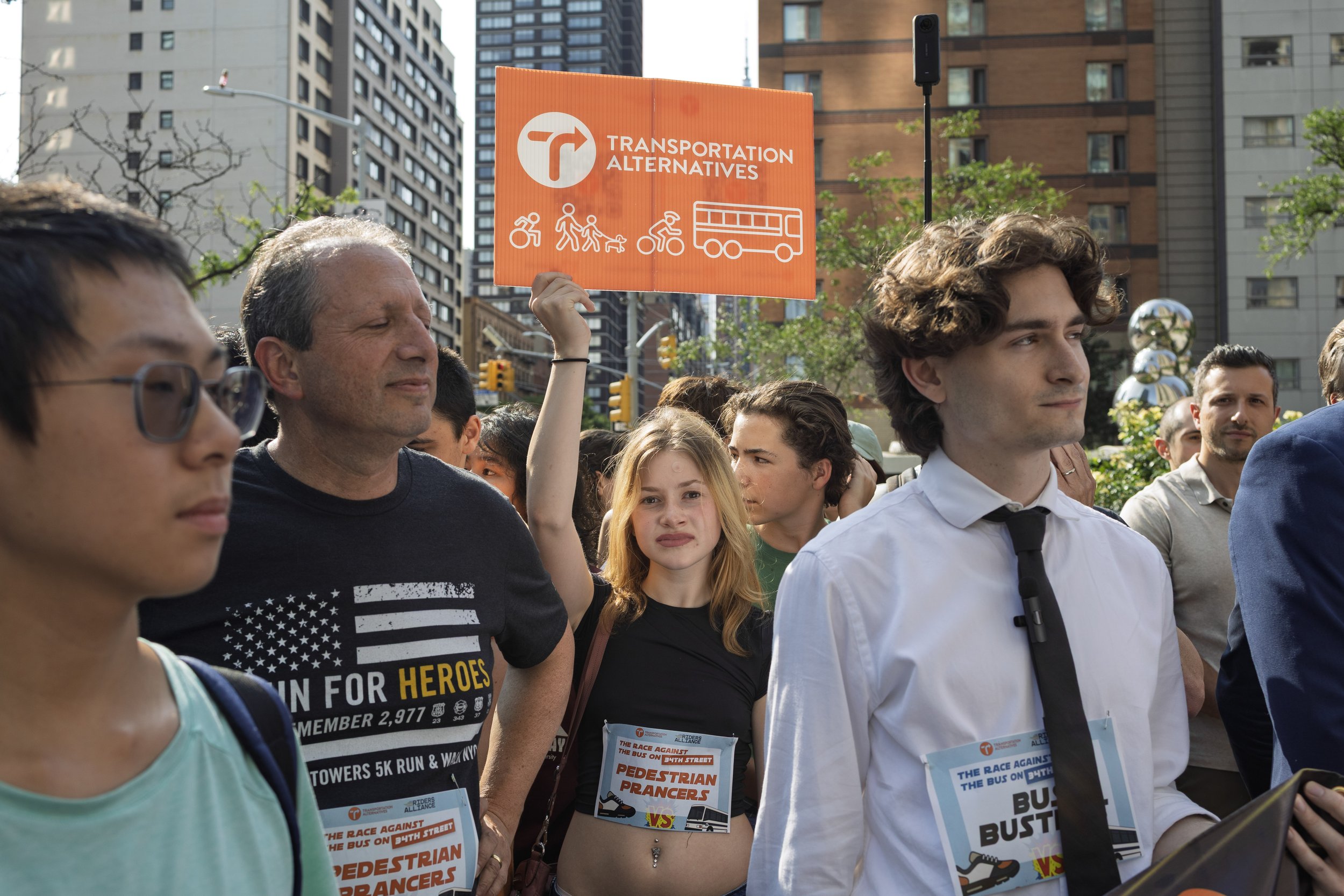
Transforming the streets of New York City can seem like a gargantuan task, but the truth is we’ve done big things before, and now is the moment to do more.
In January 2025, we saw the start of congestion pricing — the single most effective transportation policy in the modern era of New York. Consider the sheer scale of its impact: thanks to congestion pricing, 87,000 fewer vehicles are entering Manhattan below 60th street — every single day. The program reduced travel times and is a critical revenue-raiser, financing $15 billion in MTA repairs and upgrades. These long-overdue improvements will be felt by commuters in the years to come, but the program’s direct, immediately-felt effect on our streets can’t be overstated.
There’s always more New York City can do to further reduce traffic and save commuters money. Lower in-city fares on Metro-North and the Long Island Rail Road; a true Green Commuter Cash-Out Benefit; and multimodal fare integration between the NYC Ferry, Citi Bike, and the MTA would turn a successful congestion relief program into a mode-shift blockbuster. The Mamdani administration should study expanding the Congestion Relief Zone to reduce traffic in more areas of our city.
Congestion pricing’s success did not come easily. It took decades to go from an idea to a law to a program — hitting roadblocks every step of the way — but once a better reality exists, people can’t go back. This story repeats itself everywhere a city dares to put people first: over the last decade, Paris added over 600 miles to its bike lane network, created car-free zones in the city center, and is in the process of adding tens of thousands of bike parking spaces. Between 2010 and 2024, Paris grew bicycling trips from 3% of all trips to 11.2% — this change was coupled with a 40% drop in air pollution and a 34% drop in injuries and fatalities. More Parisians now bike than drive in a safer, quieter, and cleaner downtown.
The enormous successes of congestion pricing here at home and the rapid transformation of Paris abroad should be a lesson for New York policymakers. With strong leadership, we can dream bigger and imagine better for the city we love. The ideas throughout this report can serve as a blueprint for the New York City of tomorrow.
Transportation Alternatives would like to thank the following for their time and input for this report:
Riders Alliance
Regional Plan Association
New York League of Conservation Voters
Citi Bike
New York City Department of Transportation
Metropolitan Transportation Authority
Department of Citywide Administrative Services
Department of Environmental Planning, Green Infrastructure Team
Public Realm Office
Independent Budget Office
Los Deliveristas Unidos
Open Plans
NACTO
Mike Flynn
Julia Kite-Laidlaw
Juan Martinez
Rich Robbins
Note: This does not suggest an endorsement of every idea by every contributor.


